Take home message: pick up your Fast Pass for Toy Story Mania first
The Disney PR hype machine is working overtime to pump up the Star Tours attraction that re-opened at Disney’s Hollywood Studios in Walt Disney World on May 20th, 2011. Disney is banking on the excitement of the Star Wars franchise to offset the threat of a certain boy wizard just down the road. However, is the “new” Star Tours: The Adventures Continue attraction really the counter to Universal’s Wizarding World of Harry Potter? Continue after the break for an unbiased review of this relaunched version of Star Tours.
Let’s start with what Star Tours: The Adventures Continue is – it’s still the simulator ride it has been since the late 1980’s. The video screen and film are now presented in stunning, crystal clear digital 3D. The motion of the simulator is in near perfect synch with the action on the screen – thus eliminating the nausea-inducing effects of the original Star Tours.
The 3D technology is great, but shouldn’t that be a given with the digital 3D technology we can see any day in our local movie theaters? It’s difficult to impress a theme park guest with 3D technology alone because we’ve experienced it for so long in rides like Mickey’s PhilharMagic, It’s Tough to Be a Bug, and even going back to Captain EO (another Disney/Lucas collaboration from the 80’s). In addition, there are no 4D effects in Star Tours (unless you count the movement of the simulator) like the smells and water you have in other Disney 3D attractions like PhilharMagic and Tough to be a Bug.
Instead of 4D, Star Tours uses different combinations of video elements, allowing for 54 total possible ride sequences, to set the ride apart. Disney touts this feature saying guests can “enjoy the attraction multiple times without ever experiencing the same adventure.” This sounds fantastic, and should greatly allow for the increased ride “repeatability” that Disney wishes. However, in reality, there are only 11 different video elements used to create the 50+ combinations. As explained on the May 25th edition of the DIS Unplugged, these different pieces combine together like a slot machine to reveal 1 of the 54 different ride possibilities the guest will experience.
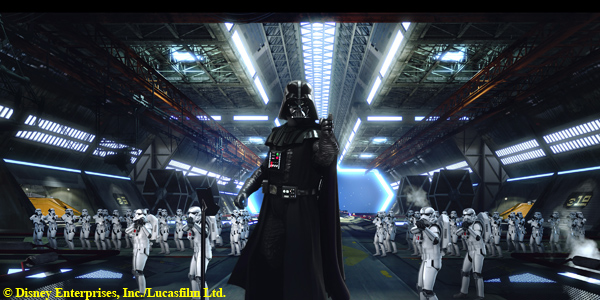
The video components include:
- 2 openings: Darth Vader or Stormtroopers (tripping over luggage)
- 3 options for opening planet: Hoth, Kashyyyk, or Tatooine
- 3 character options: Yoda, Admiral “It’s a Trap” Ackbar, or Princess Leia
- 3 options for closing planet: Coruscant, Death Star (over Geonosis), or Naboo
- 2 x 3 x 3 x 3 = 54 possible combinations
It’s not clear if the combinations are entirely random – because some options are used in a frequent “heavy rotation.” Of the 5 times our family rode the attraction, we only experienced the Darth Vader opening once, and Tatooine, Yoda, and Coruscant 3 out of the 5 times. In fact, for as much as Disney pushes the message guests can ride again and again and again without ever experiencing the same “adventure”, of our 5 rides – 2 of them were exactly the same: Stormtrooper opening, on to Tatooine, message from Yoda, and finale at Coruscant. Of the 5 times we experienced the attraction in a single weekend, the only piece our family has not seen is Princess Leia, and we’ve heard C-3PO say “this is madness!” maybe one too many times.
Don’t get me wrong, Star Tours is a very fun ride, and the upgrade to the video was definitely needed. However, reading Disney’s press releases on the new version of Star Tours with its 54 different adventures sets the expectation that each ride will yield a brand-new attraction. That’s simply not the case, and expectations should be tempered. I asked my daughters (ages 13 and 10) if they thought the different versions of Star Tours “felt” like an entirely new experience to them. Their response, “no, not really, it’s still a simulator ride.” I then asked what would they rather ride a second time, Star Tours or Toy Story Mania? Without hesitation, they both instantly exclaimed – Toy Story Mania!
I agree. Toy Story Mania’s interactive, video game element makes it much more repeatable than Star Tours – even with 54 different combinations. Our family rode Star Tours 5x, and felt like we’ve pretty much seen it all. Sure, I’d like to see Princess Leia, but “I have a bad feeling” she will be pretty similar to Yoda and Admiral Ackbar. Will I want to ride Star Tours the next time I’m at Disney’s Hollywood Studios? Sure. Will I HAVE to ride Toy Story Mania the next time I’m at Disney’s Hollywood Studios? Absolutely! That pretty much bore out during the opening weekend for Star Tours and the first Star Wars Weekend. While the wait for the newly opened Star Tours hovered around 40 minutes with Fast Passes always available, the wait for Toy Story Mania soared to 70 minutes and higher with Fast Passes gone by early afternoon. The advice for touring Hollywood Studios does NOT change with the opening of Star Tours. Upon park opening, head right to Toy Story Mania, get your Fast Pass, ride it once from the standby line if you wish, and then consider heading over to ride Star Tours.
Now to address the opening question, is Star Tours the counter to Universal’s Wizarding World of Harry Potter? Hardly. Even if we just compare the Wizarding World’s anchor attraction “Harry Potter and the Forbidden Journey” to the new version of Star Tours, Harry Potter still wins. Harry Potter and the Forbidden Journey is an intense attraction using an entirely new “roboarm” technology to whisk you into and through familiar scenes from Harry Potter’s world. Star Tours is, at its core, still an old-style simulator attraction refreshed with very impressive new 3D video elements, but Harry Potter and the Forbidden Journey still wins in terms of innovation. Bottom line, Star Tours is a fun ride with a great update as long as you’re mindful of the hype.
That’s my opinion, but I’d love to hear yours. Please leave a comment below, and let us know what you think.
Disclosure: As of December 2009, the Federal Trade Commission requires disclosure of any payments or considerations. Everything described in this article was paid for by David Parfitt and his family.
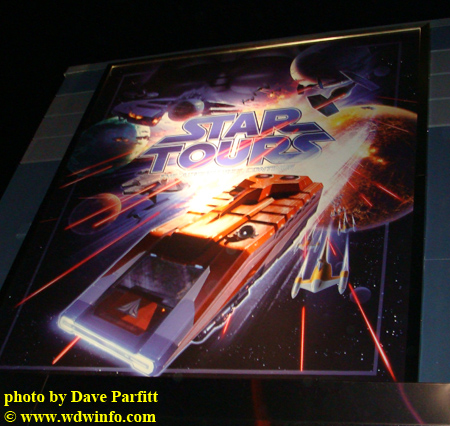
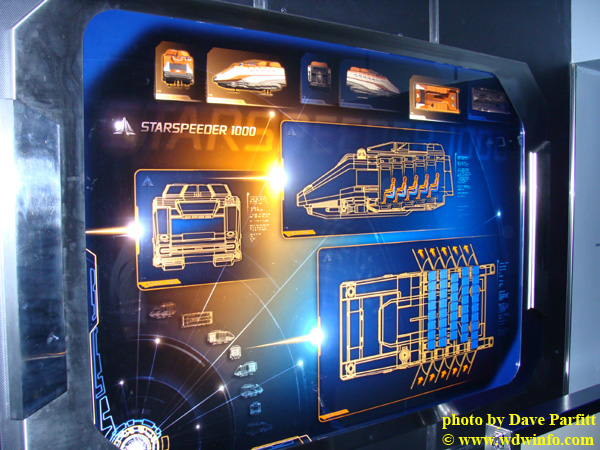
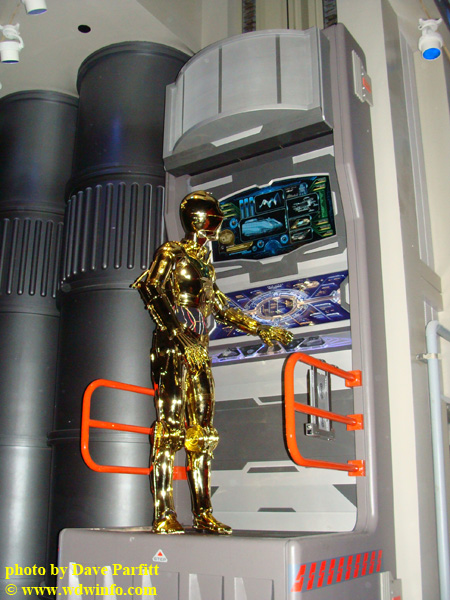
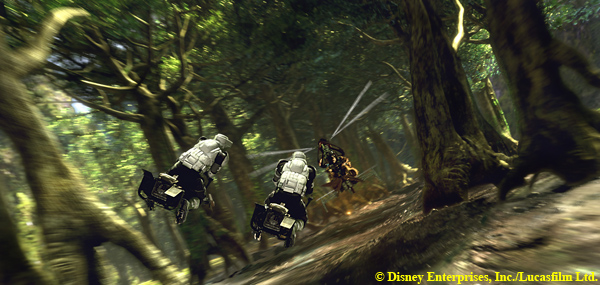
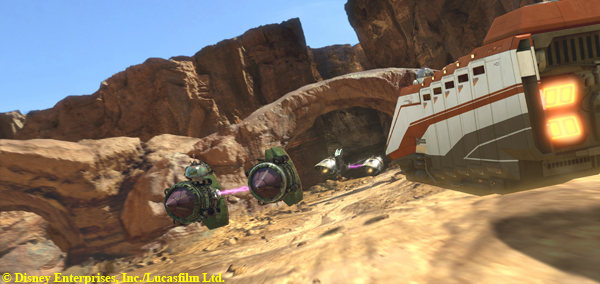
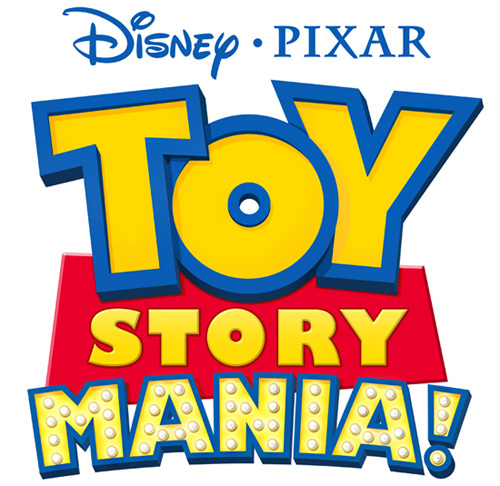
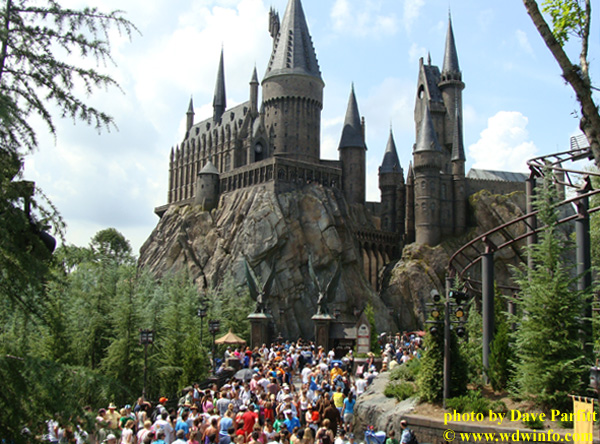
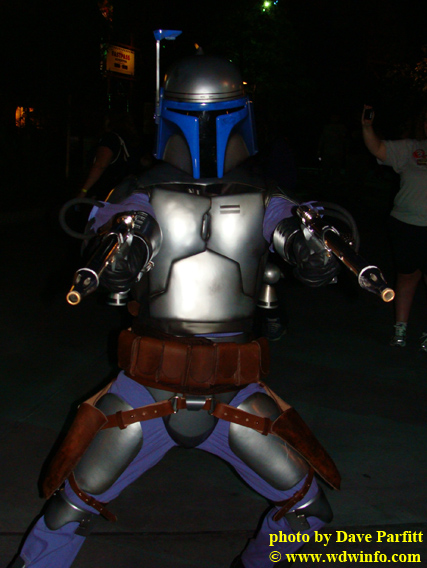
Leave a Reply